Last week, I wrote an article for Eater New York about some of the best new bar food in New York City. Aside from a long-form feature on tiki historian Jeff “Beachbum” Berry in 2014, assigned by then features editor Helen Rosner (now at The New Yorker), it was my first piece for Eater in 12 years.
My second-to-last piece article for Eater was in 2013. It was the final edition of a column called “Who Goes There?”
From 2006 to 2013, I wrote a pseudonymous, New York-centric blog called Lost City. My nom de plume was Brooks of Sheffield, a phantom peripheral figure taken from David Copperfield. I wrote it under a pseudonym because I was then working as an editor a Playbill and I didn’t think my boss would appreciate my political musings on New York real estate. In the blog, I lamented the quickly changing face of the old town as it was, as I put it, “steamrolled under or threatened by the currently ruthless real estate market and the City Fathers' disregard for Gotham's historical and cultural fabric.” (Lest you have any illusions about the New York theater industry, it is largely controlled by landlords, not artists.)
The blog did pretty well, reached a fair amount of people, and inspired plenty of imitators. Around 2008, however, I was looking for broader exposure. So I met up with Ben Leventhal, one of the founders of Eater, and pitched the idea of a column written by Brooks of Sheffield (me). Eater was new then, too. It had launched in 2005, just a year before Lost City, and, in the beginning, only covered the New York food and drink scene. Eater often linked to Lost City posts, so Leventhal knew of me.
The column I pitched would be called “Who Goes There?” The title came from my reaction every time I passed some old, gnarled survivor of a Gotham restaurant that had somehow managed to persevere amid the sweeping changes of Bloomberg’s development-happy, increasingly expensive metropolis. “What keeps that place going?,” I would wonder. “Who goes there?” With each installment, I would visit some dusty old eatery, have a meal, make notes, chat with the staff and regulars, and file a report.

Leventhal bit. He didn’t offer much money, but I was anxious for more people to be led to Lost City, and Eater had a large readership, so I agreed. From March 2008 to November 2013, I wrote more than 100 “Who Goes There?” columns.
I soon realized that I was covering a fast-vanishing landscape. Many of the restaurants I wrote about has since closed; some closed while the column was still running.
Those that have fallen include the following (all in Manhattan unless otherwise indicated):
Charlie Mom
Colandrea New Corner (Brooklyn)
El Paso Restaurant
El Sitio (Queens)
El Sombrero
The Famous Oyster Bar
Fedora
Forlini’s
Francesco Centro Vasca
Gino
Hinsch’s (Brooklyn)
King Yum (Queens)
La Petite Auberge
Lanza Restaurant
La Grenouille
Le Perigord
Lenox Lounge
Les Sans Culottes
Loeser’s Deli (The Bronx)
Marchi’s
Mont Blanc
Neary’s
Pergola Des Artistes
Piccolo Venezia (Queens)
Pietro’s
Prime Burger
Queens Restaurant (Brooklyn)
The Red Rose (Brooklyn)
Rocco Restaurant
Spain Restaurant
Spanish Taverna
Stage Deli
The Tap and Grill (Queens)
Trieste (Queens)
Two Toms (Brooklyn)
Von Westernhagen’s (Queens)
(You can find most of these columns on the Eater site or at Lost City, which hasn’t been disappeared by the Internet Gods yet.)
Roughly half of the restaurants I wrote up are still doing business in one form or another, which I guess is a decent percentage. This includes the first restaurant I profiled, Tout Va Bien, a French Theater District bistro with a lovely neon sign that had been hanging in there since 1949. Here’s part of what I wrote:
Supposedly [it] used to cater to the French fleet whenever it was in town. I'm sure those sailors felt at home. Small tables are draped with red-and-white checked tablecloths, Edith Piaf plays and a bottle of Beaujolais Nouveau is on every table. This is a place where, if they learn you're American, they don't use less French, they use more. It's doubtful you'll hear the phrases "Voila!" and "Bon Appetit" used more often and with more sincerity anyplace else in town. The menu was frozen back in 1949: Coq au Vin, Poulet Cordon Bleu, Saumon Meuniere. The ebullient British regular near me said he'd been to Tout va Bein 30 times and always orders the same thing: Tripe a la Mode de Caen. "Because nobody else makes it anymore!" (A cow's stomach, a calf's foot and Calvados are involved.)
Tout Va Bien is still around, albeit now owned by a former waiter. Based on online pictures, it looks considerably spiffed up. They don’t serve Tripe a la Mode de Caen anymore.
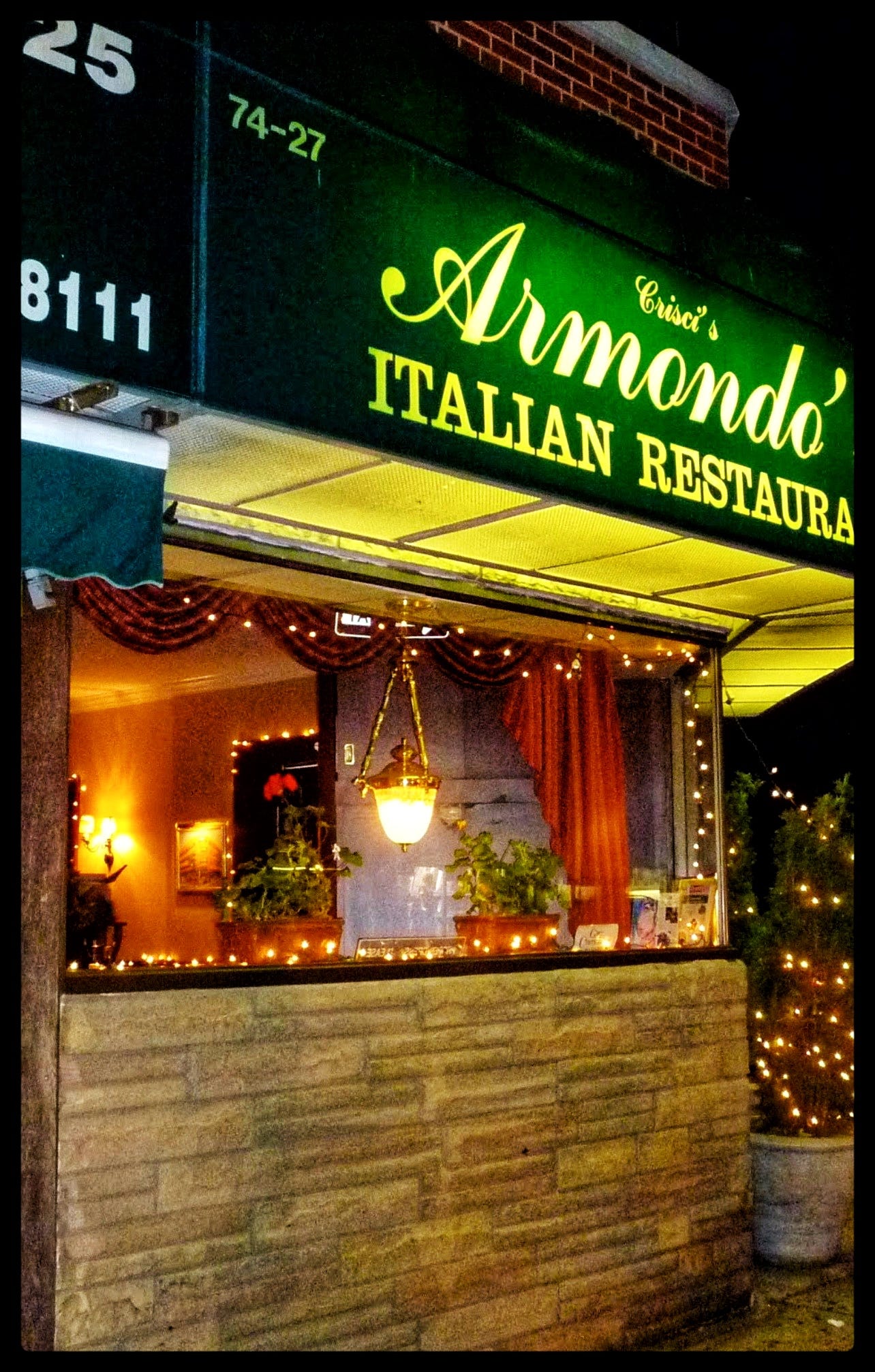
I did my best to be fair, geographically. Most of the restaurants I profiled were in Manhattan, but I visited Brooklyn and Queens places often. I got to The Bronx at least four times (for Italian joints on Arthur Avenue and old Jewish delis), and Staten Island three times (always to old pizzerias).
In the early days of the column, the photographer assigned to the stories was the talented Daniel Krieger, then Eater’s primary shutterbug. He seemed to enjoy the assignment and achieved some stunning shots of the restaurants. (Some of his photos are reprinted in this post.) He even joined me for one “Who Goes There?” dinner, at Sammy’s Roumanian Steak House. Later on, after Krieger grew tired of trudging out to the four corners of the five boroughs, other photogs took over the beat, including Bess Adler, Adam Lerner and Jenny Adams.
Adams joined me for dinner at Toledo. It was a particularly sleepy night at the posh old Spanish restaurant (which still stands) and I’m pretty sure Jenny couldn’t quite figure me—this strange bird who purposefully wasted a lot of time in musty old chop houses.
Spanish restaurants disappeared the fastest. Lower Manhattan used to be full of old Spanish restaurants. They were as plentiful as Italian joints. But heavy Spanish cuisine went out of fashion after the 1960s. One by one, the places I wrote about fell: Spain, Spanish Taverna in the Garment District, Francesco Centro Vasca on 23rd Street, El Paso on E. Houston Street (Spanish and Mexican food!), El Quijote in Chelsea (the new restaurant by the name and at that address is a new animal altogether). Sevilla in the West Village is still around, thank goodness, and, somehow, Tio Pepe on W. 4th Street.
Some places I didn’t get to in time. My review of Chez Napoleon in the Theater District began like this:
Apparently, I'm not writing these features fast enough. I was on my way to the corner of W. 50th Street and Ninth Avenue to investigate the Spanish survivor Costa del Sol, when I found the sprawling, low-slung restaurant sealed up tighter than a drum. Who went there? Not too many, apparently. Shifting my eyes one door to the east I found, nearly hidden in the shade of a large tree, Chez Napoleon, the 48-year-old resident of a solitary, four-story, red-brick walk-up. It would be French food tonight, not Spanish.
I hit most of the important German places left in New York, because I’m a sucker for German food. One of the most disturbing reactions I got to one of my columns came after I wrote about Von Westernhagen’s, an old German place in Ridgewood. People left comments informing me that the restaurant was an occasional gathering place for neo-Nazis.
Looking back, I could have done a better job canvassing the city’s older Chinese restaurants, but I did get to Wo Hop, Suzie’s Chinese Food, Big Wong and Charlie Mom.
Perhaps my oddest experience was at Marchi’s, a peculiar institution way over on E. 31st Street, almost at the East River. I don’t think I ever would have gone if I hadn’t walked by it by accident one day. Marchi’s didn’t advertise and no one ever talked or wrote about it. A crest on the outside of the building was the only indication there was a restaurant inside. It was run out of a series of townhouse owned by the Marchi family. The dining room looks like someone’s furnished home.
I wrote:
Since opening in 1929, it has served one meal, every night, week after week. It's a big dinner, with five courses, and well warrants the unadvertised $60 surcharge. But it is always the same, beginning with bountiful plates of crudités—huge stalks of celery, Genoa salami and a sort of Italian cole slaw.
Marco Marchi, one of the sons of founding cook Francesca Marchi, took my coat when I entered. "We do not accept furs," said a sign. Asked if he was the owner, he replied, "I'm one of them."…
Francesca and her husband Lorenzo hailed from Friuli. As the story goes, boarders in their building were aroused by the scents emanating from her kitchen, so Francesca decided to open a restaurant and let them pay for her wares. Today the restaurant takes up the garden level of four contiguous brownstones, all owned by the Marchi family. There's also a larger dining room with a working fireplace, and a grand barroom. They are open when business demands.
Marchi’s closed in December 2019. The buildings are still there. It doesn’t look like the interior has been touched since final service.
Among the places I’m still most angry about losing is Prime Burger. It closed in May 2012, after 74 years in business. I’d been several times before I wrote about it. I got in one last visit two days before it closed and parked myself in one of the wacky, grade-school-desk-like, single-seater booths that were the most unique thing about the place.
Menu-wise, most people don't stray far from the burgers and fries. I had two patties myself. I always spoon on some of the homemade red relish found at every table in an odd silver dish, because it's special to the place. Although I'm never sure if it's a good idea. I did so again this final visit. I'm still not positive it was a good idea. But Prime Burger is a good idea. It always was.
All these years later, that space, opposite St. Patrick’s Cathedral, is still vacant. As I said at the time, that landlord was a ****ing genius.
“Who Goes There?” had a following. There were regular commenters who went by handles like Ken Mac, Carol Gardens, M. Lane, Upstate Johnny G., Proud NIMBY and Jeremiah Moss, who went on to create his own Lost City-like blog, Jeremiah’s Vanishing New York.
Every now and then, I’d get a celebrity commenter. The most noteworthy was former New York Times restaurant critic Mimi Sheraton, who would chime in about some of the restaurants she had reviewed during her tenure at the Times. She was in her 80s at the time.
Once, Sheraton wrote, regarding Brooklyn, "When Lundy’s was Lundy’s, I’d be there. When Gargiulo’s was Gargiulo’s, I went. I certainly went to Gage and Tollner." Regarding Le Périgord, she had something to say about the way I had described the Sole Meunière I ate there.
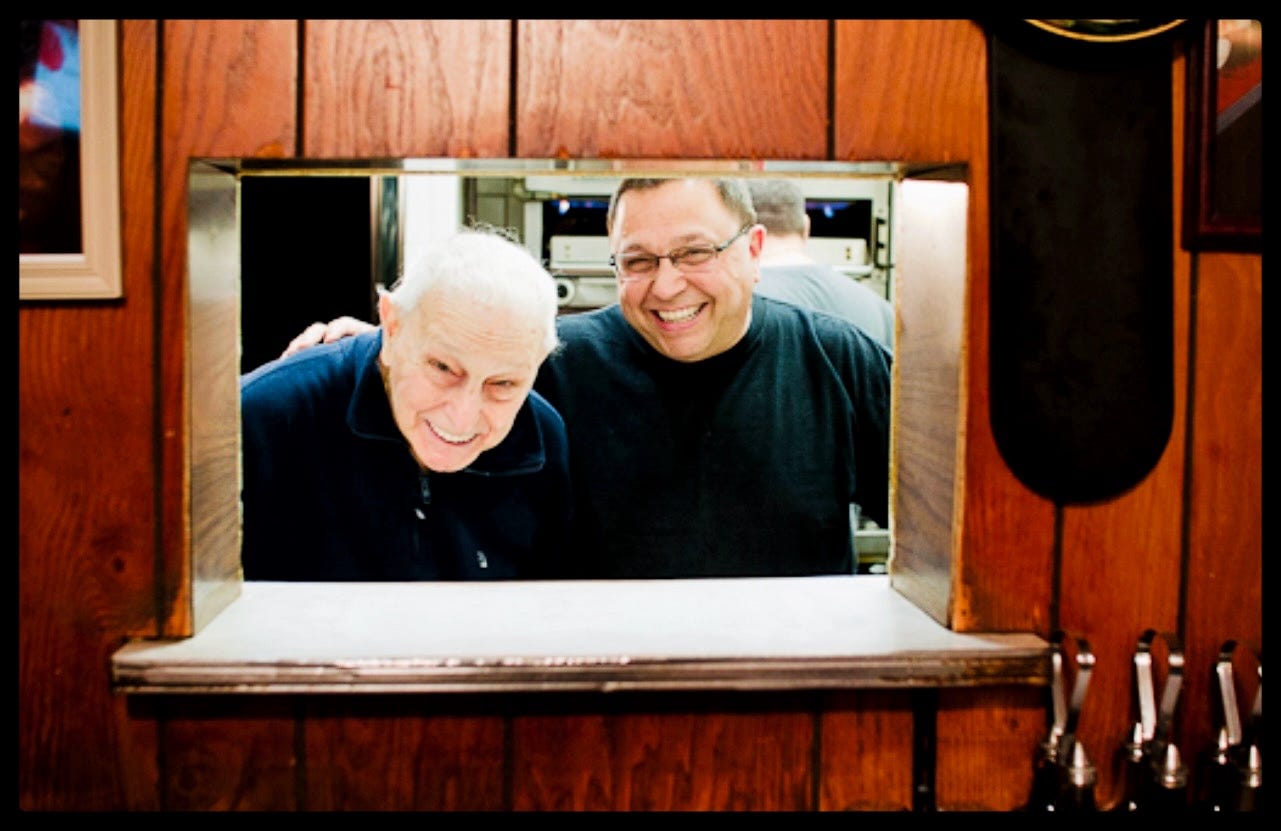
Whenever Sheraton shot off a line, the other commenters would go berserk. I remember one comment in particular that went, “Guys! Mimi Sheraton dropping some knowledge right here in the comments section!” (None of these comments exist any longer on Eater. I’m not sure why.)
Other times, a voice from the past would surface. When I wrote about Brennan & Carr, the roast beef place in Sheepshead Bay, Cathy Carr commented, “Actually, my grandfather, Ed Carr & his best friend Mr. Brennan built it!!” When I wrote up Monte’s in Greenwich Village, Chris Rosasco wrote, “Monte's restaurant was started by my grandparents, Giaccomo and Teresa Rosasco, about 1929. As a child I grew up spending much time running around the restaurant and have many stories that I could tell. The restaurant was left to my father Guilio and my uncle Peter when my grandmother passed in 1979. My family sold it to the Mosconis' (friends of my grandparents) in 1985.”
I would get plenty of private, direct emails from past owners as well.
I stopped writing “Who Goes There?” because I shut down my blog in 2013, so there was no longer a forum for it. My days as Brooks of Sheffield were over. Eater, meanwhile, had grown into a national site, covering 20 cities. In 2013, it would be purchased by Vox Media for $30 million.
My final column, in November 2013, was for El Sombrero, a Lower East Side Mexican restaurant commonly known as “The Hat.” It has been a haunt of mine in the early ‘90s when I was poor and lived a few blocks away. It closed soon after, then reopened, then closed for good in 2022.
I’m grateful for my time writing “Who Goes There?” It provided me with an eduction in the history of 20th century dining in New York, one I wouldn’t have achieved otherwise, and one that would be impossible to pursue today. Though all the restaurants I went to had been around for decades, I visited only a minor fraction of them before the column came along. Eater and Lost City gave me a reason to canvas scores upon scores.
The column also shaped my present dining habits. Yes, I check out many of the new restaurants, but half of my meals out are at places that have a patina and history to them: Sam’s, Gene’s, Sardi’s, Wo Hop, J.G. Melon, El Parador, L&B Spumoni Gardens, Lexington Candy Shop, Lee’s Tavern, Gargiulo’s, Katz’s Deli, Keen’s, Bemelman’s, Bamonte’s, Parkside.
Who goes there? As it turned out: me.
Odds and Ends…
I paid a call on the bar at The View, restaurateur Danny Meyer’s reinvention of the rotating restaurant space atop the Marriott Marquis Hotel in Times Square. Head bartender Ricky Dolinsky is serving up a custom Martini made with pastrami spice from Katz’s Deli, which comes with a sidecar of pickle brine; a brown-butter-fat-washed Marquee Old-Fashioned made with Suntory Toki, Cognac, Shiso, peach and honey; and Liberty’s Torch, a creamy, green, tiki-esque drink made with rum, blended Scotch, lime juice and pistachio orgeat. But the ultimate pro-move here is to order the house Manhattan which, though made with overproof, single-barrel Jaywalk Rye, is still built 2-to-1, and costs as much as all the other cocktails ($22). The perfect post-show nightcap…
I wrote an article for Vinepair about the many bars inside the newly opened Printemps department store in the Financial District, including the Red Room Bar, named after the famed, landmarked Red Room, a former bank lobby… Film Forum is screening a retrospective of the films of French director Rene Clair through April 3. Among the movies featured are the rarely seen American comedies I Married a Witch and The Ghost Goes West, and Le Million, an unusual quasi-musical, partial-sound film that was one of Clair’s first successes… M. Wells, the celebrated Queens restaurant which closed in Long Island City last year, will do a pop-up at Bushwick’s New York Distilling Company four Sundays in a row, beginning on March 30. According to Eater, “they’re running a Sugar Shack series, a maple syrup-filled, family-friendly event that’s a nod to Dufour’s Québécois heritage. But there are plans for a more regular food program at the site, more in line with a restaurant.”… Ariel Arce, the force behind Tokyo Record Bar, Heroes and Roscioli, is opening Leonessa, an Italian-inspired cocktail bar set atop the rooftop of Conrad New York Downtown on April 3… Accademia Dante’s Legend Series continues March 25-27 with Milan landmark, Camparino. Founded in 1915 by Davide Campari next to Milan's magnificent Duomo, this historic bar nestled in one of Milan's most iconic shopping arcades is the birthplace of Campari, created by Davide's father Gaspare in 1867. Click here for tickets.




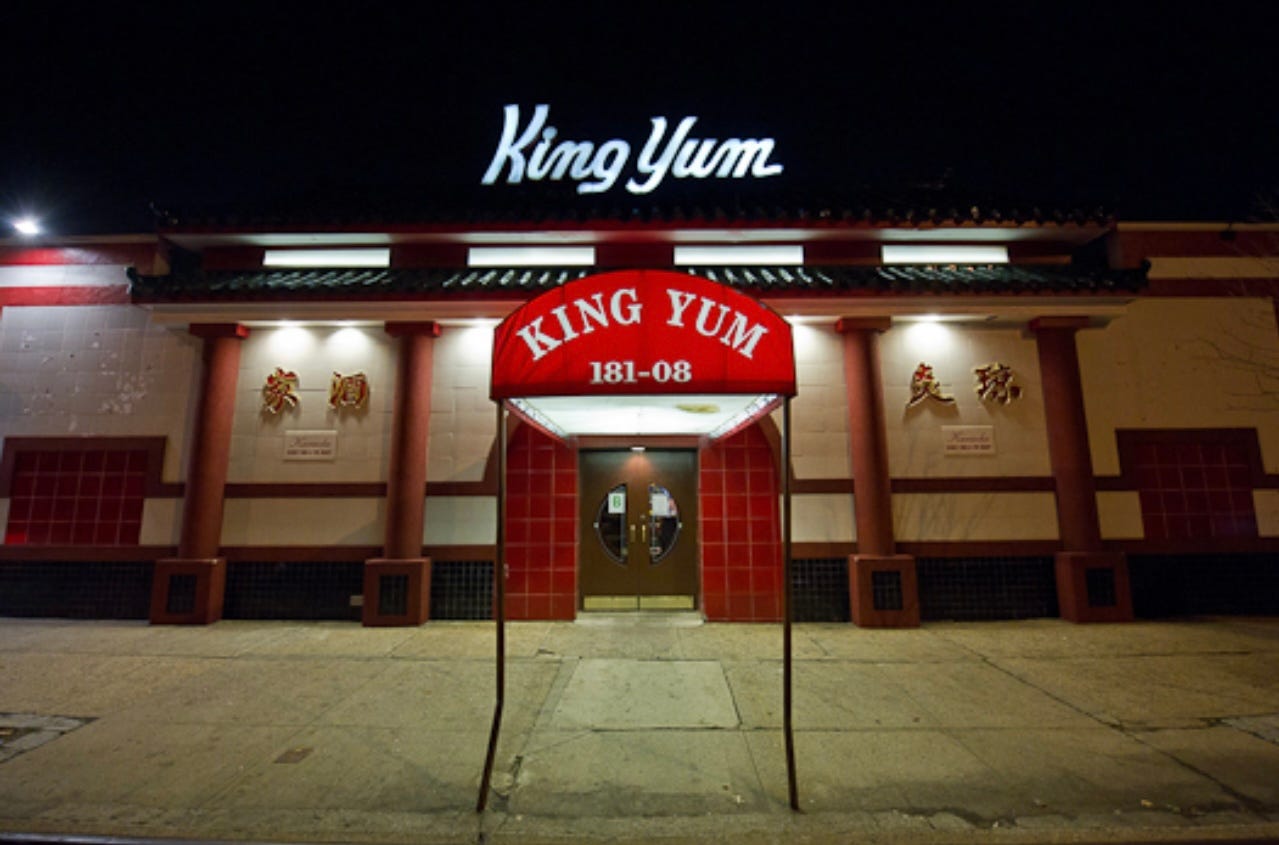
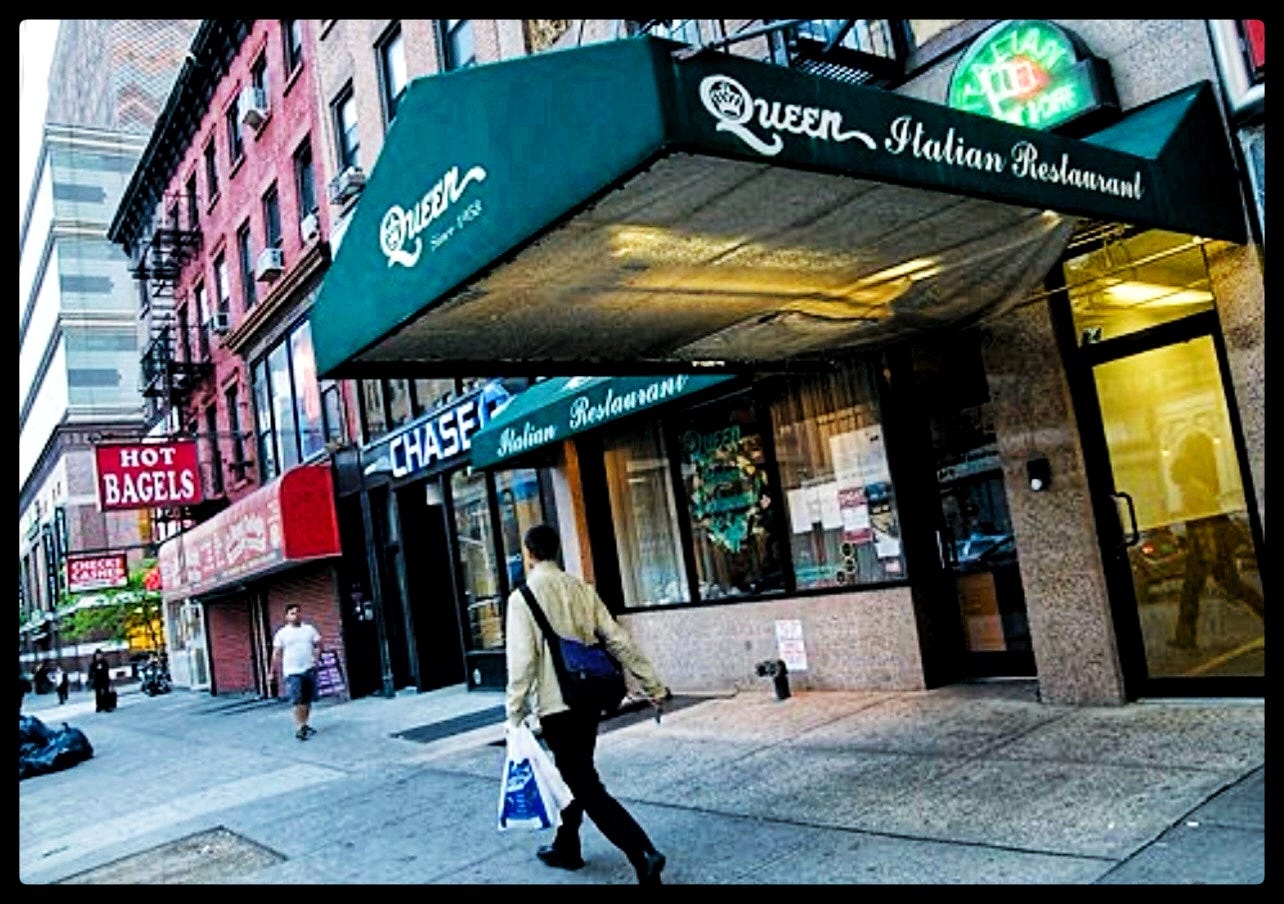

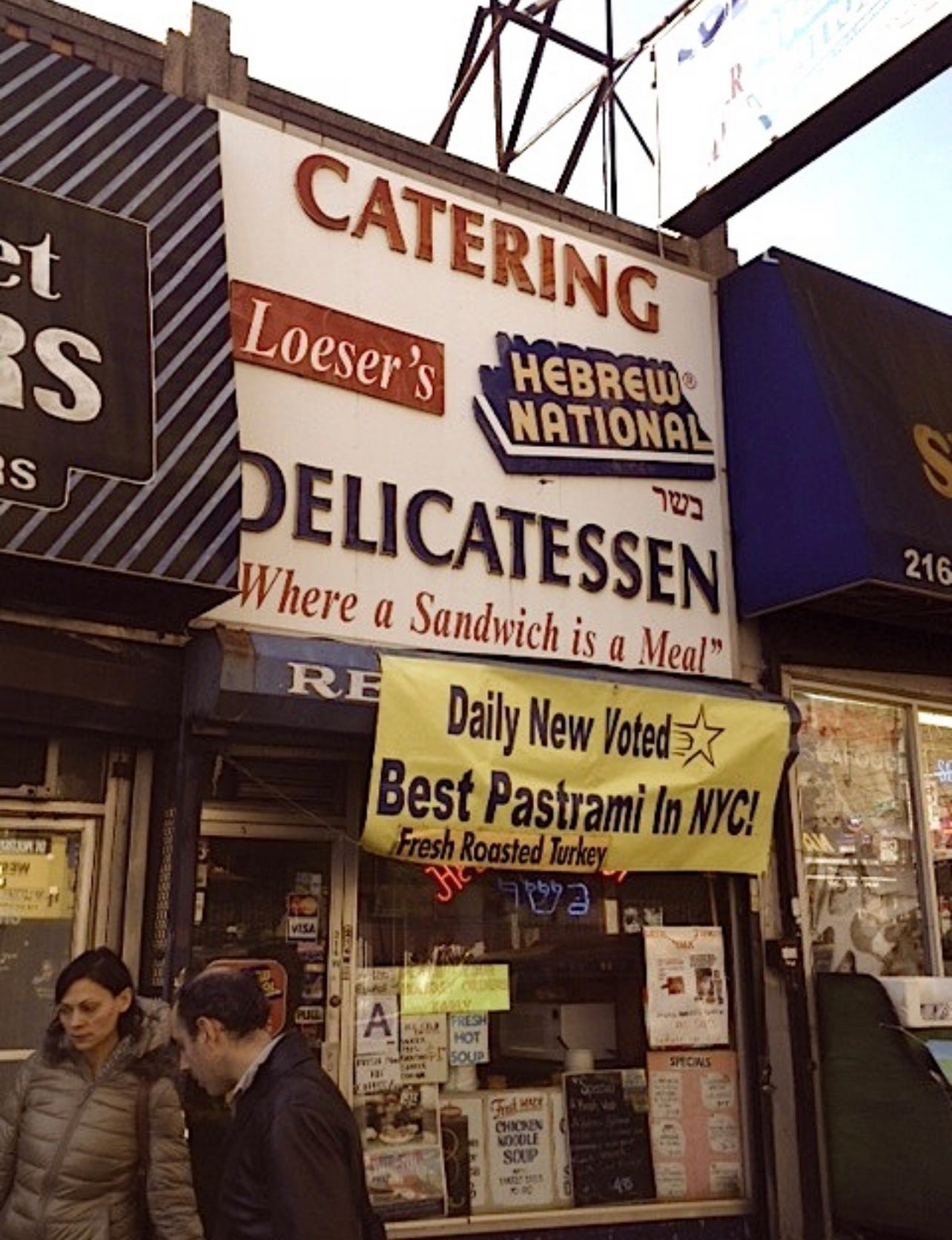
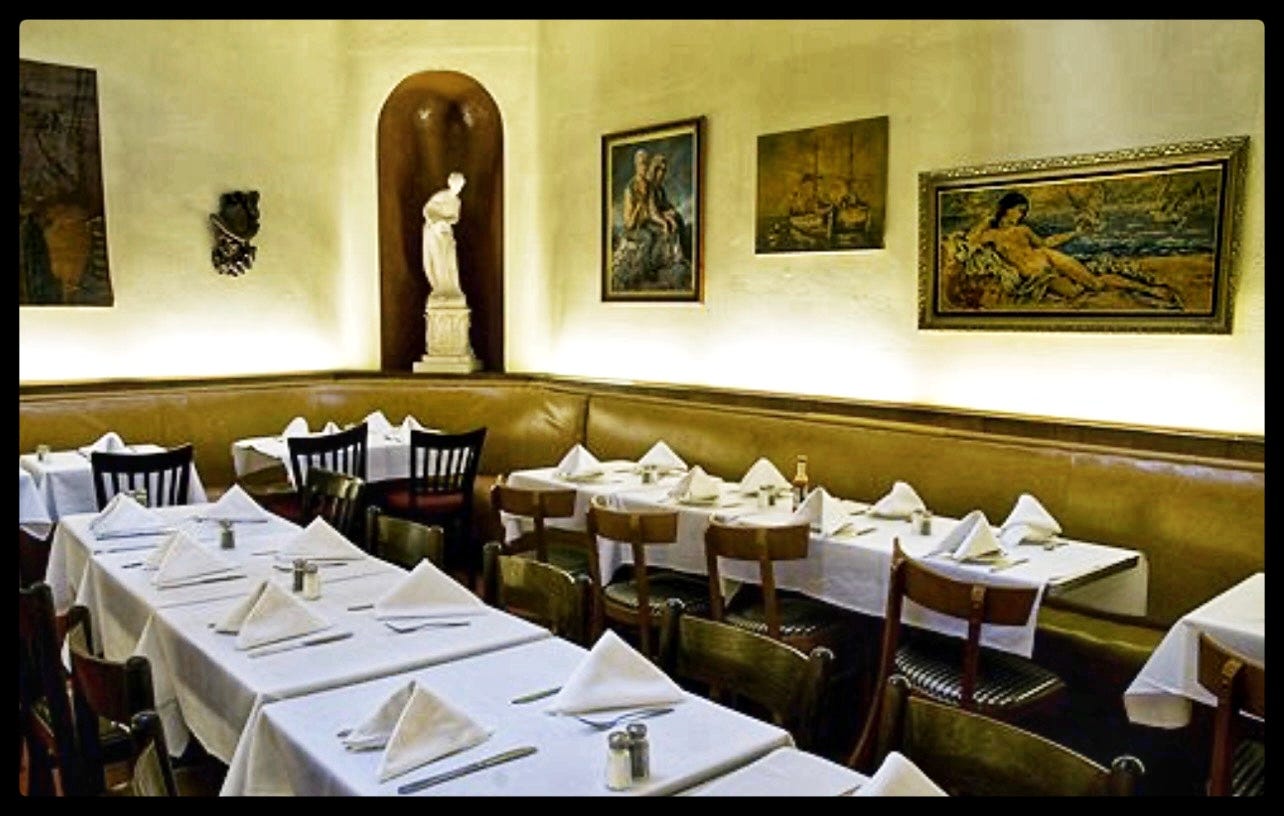


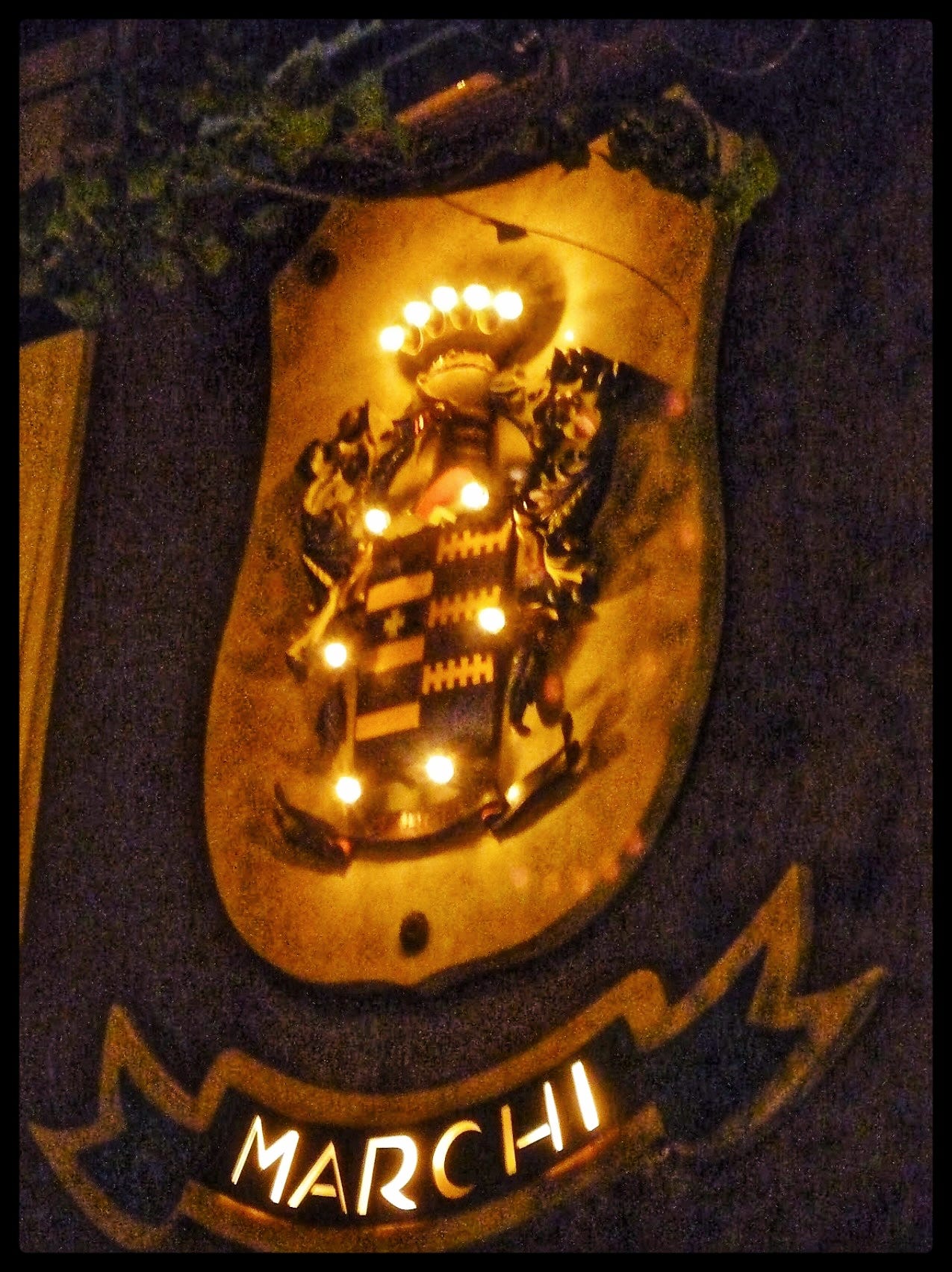
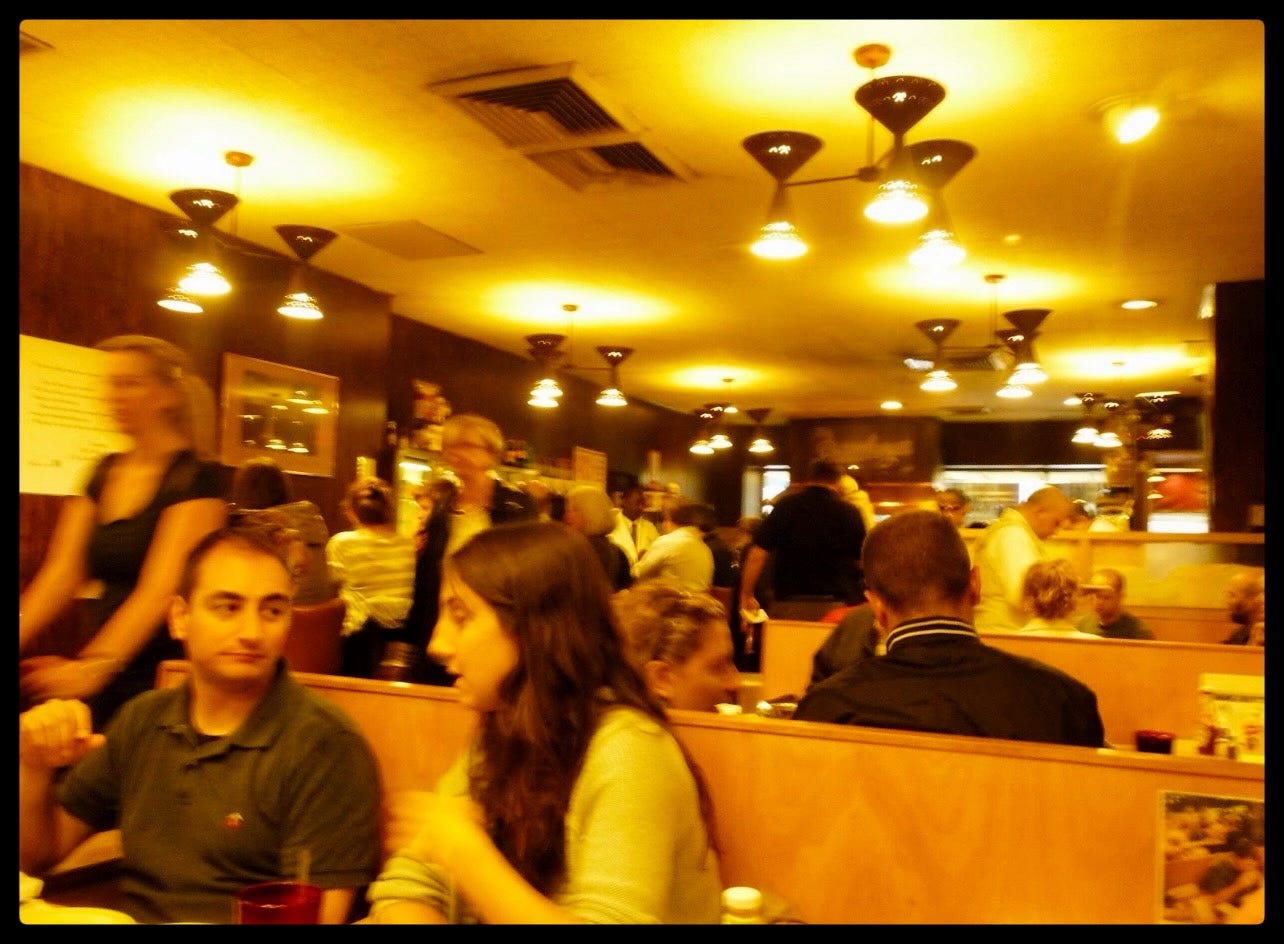


This piece has everything - new stories, old stories, new restaurants, old restaurants, drinks, Mimi Sheraton mentions, New York City love and tripe. ❤️
Loved this Robert. Have been to NYC the past two summers for my first ever visits and pleased to have made it to a couple of the places on your list of regulars. Our JG Melon visit was one of my favourite nights out - our 14 and 17 year olds loved it maybe even more than we did. And as a “Lee” we had to make the trek to Staten Island for a late lunch at Lee’s Tavern.